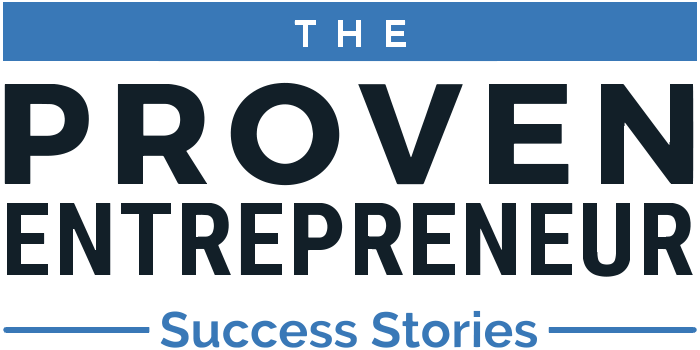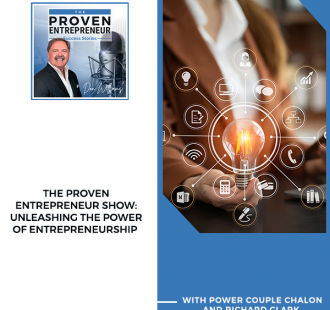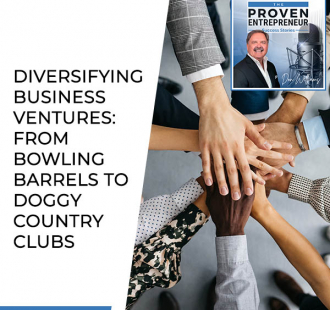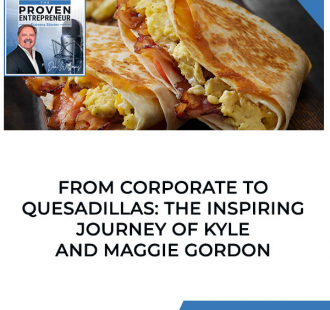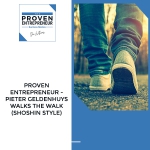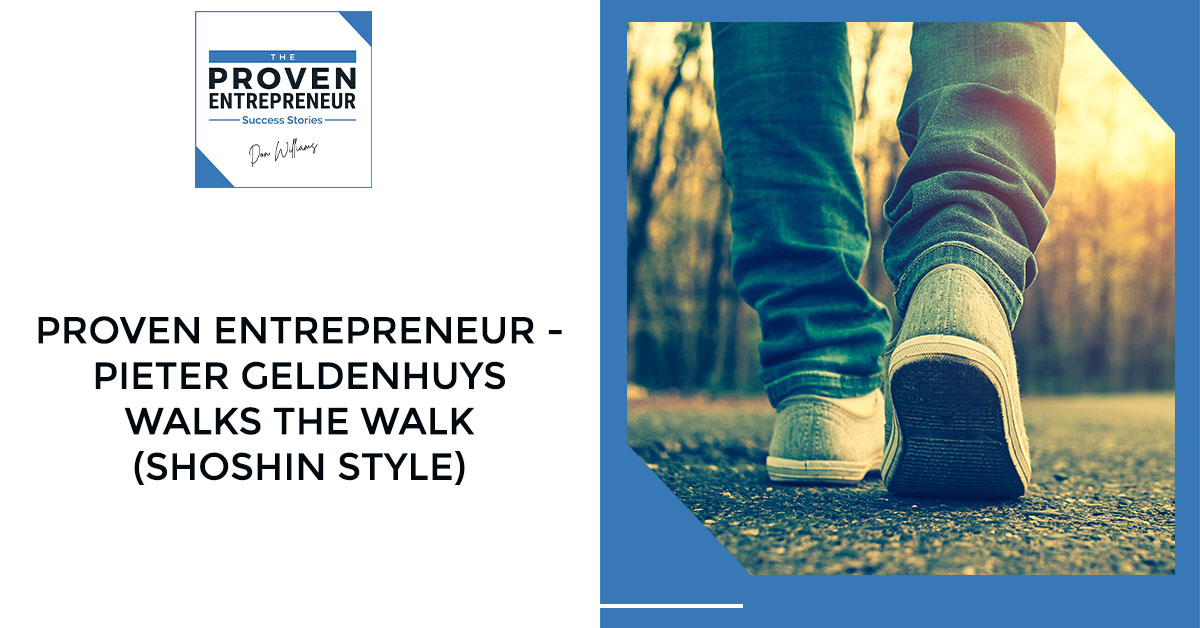
Proven entrepreneurs need to know how to pivot to thrive. Don Williams welcomes his friend Pieter Geldenhuys, the Founder of Shoshin Walks, who walks the walk. Pieter shares how you need to iterate according to your network and skillset when you have an idea of what you want to do. Then bring in incredible people who are experts in their field to help you expand your business. But make sure to stay present because you run the risk of losing momentum if they leave. That’s why you need to set a business structure in place. Need more wisdom to help you pivot and thrive? This episode’s for you.
For information on how to work with Don visit Work With Don Williams
You can also reach out to Don Williams at https://donwilliamsglobal.com
Please join Don and his businesses in support of St. Jude’s Children Research Hospital in its Mission to cure Childhood Cancers. You can donate to St. Jude at stjude.org/donate
—
Listen to the podcast here
Proven Entrepreneur – Pieter Geldenhuys Walks The Walk (Shoshin Style)
How A South African Guide Service Survives, Pivots, And Thrives Through a Global Pandemic
In this episode, our guest is a proven entrepreneur all the way from South Africa, Pieter Geldenhuys, who owns Shoshin Walks. He is a good friend of mine. Welcome, Pieter.
Thank you for having me, Don.
It’s my pleasure. Thank you for joining us. Let’s hop right in. What’s one good thing you’re grateful for in your life that we don’t know? I’ll go first to give you a little time. I was on a call with a client. I have a weekly standing call with this client with 8 to 12 people on the call every week. In the call, the second-in-command publicly recognized something positive that a subordinate had accomplished, and you could just see everybody elevate. It’s not just that person but the entire team because of that public recognition.
The CEO of the company shared something from their heart, where they were authentic and vulnerable. That’s the beginning of magic in your leadership. For me, my mission is to help other people improve. It was just magical to see the clouds part, the sun comes down and magic happens. I’m grateful for that. Pieter, what’s one good thing?
I have different gratitude from what I have speaking to you now. I did a bit of Enneagram-based coaching, which is a new thing that I’m busy with my star person, Yolanda. She’s been with me for over ten years. She’s going to wait to have some babies. She’s back as a virtual assistant within this new normal. We did some Enneagram-based stuff, and I felt like I helped her shift something in terms of her self-awareness, which might help her. I was grateful for that opportunity and to be a part of that process. It’s cool to see something shift inside of our heads like, “That might be something.”
It’s so fulfilling to see the light bulb click on and sometimes, it takes a while. I know in my own life, sometimes I have to hear things in different ways from different people, and maybe the 3rd or 4th time I hear something, I’m like, “A-ha, I get that.” The other three people are like, “Don is slow. Why didn’t he get it when I told him?” I know that I have to communicate in a way that people can hear, and that’s different for different people sometimes.
Don, when the student is ready, the master will appear.
Let’s hop right in and thank you for sharing your one good thing. Tell us what you’re doing now. Tell us about Shoshin Walks, when you started it, and what you do.
I committed to starting this business when I met you a few months ago in Detroit at the Regional Leadership Academy for the Entrepreneurs’ Organization. I’ve said, “There are two good things that happened. People want to go away on retreat, they want to do personal work, and just take some time to slow down to speed up again.” The other great thing that people do is go for a dream nature adventure. They go for this long walk in epic places like Peru, the Andes or Europe. I said, “I’m going to combine these two things. I’m going to take people for incredible multi-day walking adventures. We’re going to layer forum posts on top of that, and help people connect with their better selves and the vision for their lives.”
Iterate according to your network and skillset when you have an idea of what you want to do. Click To TweetThat was in 2018. You’ve been doing that for a couple of years and probably had a little curveball called a stay-at-home virus, COVID-19, etc. that threw a couple of curveballs in there.
It was an interesting process because, as you might know, the actual business that I run with my wife is a luxury safari business. We bring people into Africa to go to Londolozi and all these kinds of spots. That business was completely destroyed, and it’s been on ice for about a year. We had a big business. We’ve let most of our team go. People are wanting to come back, but we’re still not there as you know. You’ve got to take the opportunity, and within that, I had started this business as a passion project.
The passion projects became the main project. I managed to launch it within this pandemic with local South African products. I want it to be an international business but everybody is traveling locally now. I’m field testing all of the protocols, and the way I do it with these amazing walks we have in South Africa with local companies and entrepreneurs.
It is spoken like a true entrepreneur. When what I was doing couldn’t work, I decided to do something else. As you know, Leta and I had a month scheduled in South Africa just before the world came to a stop. As the world is starting up again, we’re looking to resume that plan. Hopefully, the next time I see you, it will be at your home and not through the magic of Zoom. Tell us about your luxury safari business. When did you start that? How did you get into that?
There are iterations. As an entrepreneur, this whole thing of, “I’ve got this vision for my business,” is often not how we start. We start by solving a problem and going, “This thing is not being done well. I’m sure I could do it better. Let me go out and do that.” That’s what happened to me. I saw a lot of people in Cape Town hosting guests in the wrong way, and I wanted to fix it.
I started with a few vehicles. I became a tour guide and I built it organically. I was bootstrapping it for over a decade. About halfway through, I realized I’m leaving a lot of cash on the table. I have all these clients, they all love me, they all come back, but they are just booking me for these three days in Cape Town. They could book not just the tour but the hotel and flights as well. They can book the whole safari package. Over time, I built all of the vertical products. I do not have more clients. In fact, I have fewer clients now than I had on three years ago by a factor of four. My business is three times as big because for every single client, I do everything for them. That’s the way I went with it.
That’s a magic nugget, people. One-quarter of the clients, three times the revenue, if I heard that right. Many times, entrepreneurs and businesses, in general, underprice the product, service or experience that they deliver. The easiest way in my sales consulting business to bring more money into a business is, “Can we raise our prices now?” Many times, entrepreneurs are so reluctant to do that, but most of the time they are phantom reasons, not real reasons as to why they shouldn’t go ahead and do that. Let me take you way back to young Pieter. A young child through school-age before university, were your parents entrepreneurial? Is that where you caught the entrepreneurial bug?
My parents own a travel agency, so they were in the tourism game. It was different. I grew up where there were people that go, “I want to put away my laptop, my books and my files, go home at 5:00 and have a whiskey.” I grew up with my mom sitting at 11:00 PM by the desk working out travel itineraries for clients. We took South Africans all over the world. They had that business for over 30 years. I grew up in that. That was my learning ground initially as well.
Another point you bring up is this. It’s almost universal that entrepreneurs had a very good work ethic installed in them by their parents. Whether they were pulling vegetables from the garden and selling them in the farmer’s market, working on travel itineraries at 11:00, or waiting tables in a restaurant at the age of ten. They grew up working. There is a saying, “The harder I work, the luckier I get,” and there’s certainly some truth to that.

Gary Player, the famous South African golfer says, “The more I practice, the luckier I get.”
After that, did you go to university? Did you go to the military? What happened as you launched your adult life?
I finished university and then went away for a couple of years. I worked in places like the UK and Israel. I came back and I joined the family. My father bribed me basically to come back. He promised me rugby tickets to two big games over in Australia and New Zealand, but I fly via South Africa from London to get there. He lured me back with something that he knew I couldn’t resist, and I joined the family business. We worked together, me, my mom, and my dad for about four years. During that time, I got my MBA part-time at the University of Stellenbosch. It’s our Oxford and I got my MBA.
At that time while I was finishing my studies, we decided to exit, and there was a big reason for it, Don. It was a travel agency so airlines got commissions. We are big in the South African corporate market as a medium-sized agency. It’s a great time to sell because it was all going to be about a high niche or high scale.
My father didn’t want to go high niche or high scale either. We had a good medium-level agency, so we sold it. I worked for the corporate overlords for about three years before I cashed in my checks. I went off and take some greens. I came back eventually. I went away again for a few years and did some professional education stuff in the US, and I came back and started this business.
I love the fact that your parents and you saw the full cycle of the entrepreneurial journey. They started a business, they grew a business, and then they sold the business because as we know for most entrepreneurs, their largest asset isn’t their home. It isn’t their retirement funds. It’s that business, yet so many entrepreneurs ignore looking at their business as the asset that it really is. Thanks for sharing that
My father is very smart. He took the lead, and you didn’t just sell your business because as you know if you sell your business, the new guys are going to want you to be in it for a while to hold their hand while they take over your clients and your team. About three years before, he didn’t tell me but he started to give me responsibility. He brought in one of the journey managers and the two of us were running the business when he decided to start to sell so he could step away and we took the pain off.
It’s like selling your car, and now the new guy expects you to drive it. You can’t fix it. It gets run down. You can’t put in gas, nothing. That was what I was sitting with but he was very smart in getting out and getting us to run it. I would always say, if you think you’re selling, start putting your things in place three years before you want to get out. Even if you don’t want to sell, start structuring as if you want to sell. That was a great lesson for me.
I think that is very sound counsel. Certainly, in the States and probably everywhere, you need three years of solid financials if you want to maximize your exit. One year won’t cut it. People are going to want to be able to look back several years. Whether it’s good, bad, or ugly, they’re just going to want to see sound financials and reporting.
Having a business structure sets you free. Click To TweetAs you know, Don, you can make the business look any which way you want, pay yourself a low salary or pay yourself a high salary. There are lots of ways to look at either very good or very bad, depending on how you want to structure it as an entrepreneur. If you want to sell it, you need to look good.
There are certainly people who can help you with that who are in that business professionally on how to package and present your business. After the exit, you went and did corporate. Tell us how you came to start your first business?
I went away and I wanted to come back and do three things. This is also a bit of a gift of COVID that I’ll get back. I don’t know if you’ve ever heard of Derek Sivers. He’s a very well-known podcast guest of Tim Ferriss. He talks about the stages in life and how you focus. In 2007, when I came back from my travels and I wanted to restart, I want to do three things. I wanted to write a book. I wanted to be in some kind of management consulting training and I thought as a third option, I’ll go back to starting a tourism business.
When I was 32 years old and came back, I didn’t have the networks, the knowledge, or the support structures to either write a book or be in the training world. I went to the third thing that I thought of and I was like, “This is what I know how to build. This is the world that I know. I have a specific problem that I want to solve.” That’s how it started. I bought a minivan and I said, “I’m to take all these Swedish backpackers on wine tours.” It was how I started, “I’m going to give them a better experience than the previous guy,” and we were off.
If I had an opportunity to take people on wine tours, I might have started my entrepreneurial journey during that.
I had a lot of fun that first year but I made no money, and that’s when I started to iterate. You have an idea of what you’re going to do, and then you iterate according to your networks, your skillsets, and it took eighteen months for the truth to find me in terms of where I should play and how I should play. Once I got there, I was off.
I think that’s common with most entrepreneurs. They start and in the end, you learn. You do and you learn. Most of us start ugly. If we look back at it, we’re like, “I didn’t have this. I didn’t have that. Maybe if you knew then what you know now, you wouldn’t have started with what you had.” You would have said, “I don’t have enough.” I think that’s just the nature of being an entrepreneur.
Sometimes we jump from the plane and build the parachute on the way to the ground, and that’s how that goes. I want to ask about a warp speed moment. Some positive time in your business where things were going fairly well, but all of a sudden 1, 2 or 3 things happened, and your business exploded. Do you have a moment like that you can share with us?
It’s a little bit of a chicken and the egg because I told you I took some time in between corporate and starting the business where I did some lecturing. I taught at the college, and I was trying to figure out trying to write a book and none of the stuff stuck so I started the business. What happened was I met all these amazing young people I’m teaching. Young people with lots of smarts and potential. I hired two of them, Yolanda and Caren. Yolanda was my first follower.

Any leader needs this incredible person that is going to take up the slack and run with all this stuff. I hired her before I could afford her. The moment I did, the first quantum leap happened in terms of revenue and clients. It took a couple of months and suddenly we were off because she is that good. It freed up my time to do business development and take care of the opportunities that I was not able to because I was too busy in the business. The next quantum leap was a few years later. We built a bit of a team and we had a few very good people.
I had to hire Caren who was a year off Yolanda, also one of my students in a previous iteration. Caren’s thing was she wanted to structure. I was running my business and nobody takes a holiday. Everybody works on the weekends. We’re always setting our souls to this business and funny enough, that initial team was bought in. They bought the vision and we’re doing things differently. As you know, you can solve a lot of problems with talent and work ethic, but Caren came and said, “No. We need hours, holidays, HR structures, and some stuff.”
As Caren came in, we started bringing all those protocols. Suddenly through the structure, gave all of ourselves the permission to also take time off, take a weekend, and hire someone to do the job for us. That was the next exponential. Suddenly, I went from 4 to 12 people. Suddenly I had car washers and contractors. It was interesting and she brought that structure. The structure sets you free, Don. I didn’t want structure because corporate overstructured me, but the structure can set you free. That was the lesson.
On the personnel front, most of us know that the answer is not in the what or the how. The answer is who can fix that? Who can climb that mountain? You almost cannot pay the right people too much because they’re worth everything. The second nugget from Pieter was bringing in the right tools to help you treat the business like a business and not Pieterland, which is probably how it was in the early days. It was Pieter’s kingdom.
The first few years were crazy. I resented her for wanting to form guidelines on a lot of stuff that I said, “That’s not how I do things.” She was consistent with the values. She just wanted us to be structured about how we did things, and it was game-changing. I’m fanatical about the right structures. Good people can be excellent in good structures. Excellent people can fail in bad structures. If you have both things, you can go somewhere.
I totally agree, and congratulations to you for putting your ego aside enough. I don’t think you can be an entrepreneur without ego. The key is knowing when to push my ego aside and let someone else run the ball because I don’t have all the best ideas. The team will find the best ideas but they won’t all start with me or with you.
Thanks for sharing those warp speed moments. Let’s go the other direction. Sometime in your business career, when at the time it was like, “This is hard and painful.” Maybe now, when you look back at those events in retrospect, you’re like, “It probably was for the best, though it was brutally painful at the time.” Do you have a hard lesson that you can share with us now?
There were two iterations of that. I’ll go to number two. I’ve talked about these amazing people. The big problem of that is if you build too much of your business around these incredible people, you also run the risk of when they leave, it’s very hard for the business to keep on the same momentum. Yolanda is working for me again now, as I said before, but she met a guy and immigrated to the UK. When she left, I had twelve full-time employees at the time, and about eight of them left within six months because I had taken such a step back.
That particular year, my father passed away, and I had spent very little time in the business. I let her completely run things. When she left, we changed locations and a few other factors but 70% of my team went with her. Not with her to another company. She trained them and at that point, they all thought she was the boss. I stuck back too much.
When someone gives you a beautiful opening, run through it and don't hesitate. Click To TweetTheir cultural affinity was to her, not to the company and each other on the team. A 35-year-old entrepreneur founded a bunch of companies, and I’ve seen what I would call attrition suck. A powerful and important person in the business leaves and sometimes it sucks some other people with them and you have to try and avoid that. That is a hard lesson and one we have probably all been through at one time or another.
I want to expand on that. I ended up in court with some people that I hired and fired right away. I turned to my wife and she says I change staff more than she changes her underwear. That’s when we met. It was quite traumatic but a few months later, things had settled down. A new team was starting to form, and that next year, we grew by 50% in terms of revenue because the new team took up the slack. I had to work hard in the business and reengage, and I could.
What nobody understood in the old team was I was still the business, I just chose not to. It worked out and we bounced back beautifully, but it was hard. I don’t know if I would do it differently now. As you said, it’s all about the values. I don’t make it about an individual. I make it about the team and the way the team embraces the values and the bigger purpose of the business.
I think for many entrepreneurs, if you say, “Would you do it differently?” Most of their answers go like this, “If I knew then what I know now, yes, I would have done some things differently, but if I knew then what I knew then, I’d probably do what I did then.” I was doing what I thought was best and the smartest, and it just turned out it wasn’t. One thing I share with my clients is this. In my own life, I feel that I either win or I learn, and learning is just a little slower winning.
You’re such an Enneagram seven. That’s a total reframe. In the work that I do now, I’m a seven. We see the bright side. This is an opportunity and a learning moment. A lot of entrepreneurs share that trait.
I hope that’s good to be a seven, and if you’re a seven, I’m in good company. The next question is if we had a time machine and I could say, “Pieter, step into the time capsule. We’re going to take you back and you’re going to have one short conversation with your twenty-year-old self.” In that short conversation, you can share one piece of advice with the twenty-year-old. What would that piece of advice be that you would give your twenty-year-old self?
It is to say yes.
I think I know where you’re going, but tell me a little more.
When the national team captain of the golf team asked me to play in our local university team, I said no, and I have no idea why. I was 21 years old and I missed it. I could have made such good friends. I said no and I cannot tell you why. I was asked by a beautiful girl to go to the dance with her and I said no. I cannot tell you why. I was asked to do this particular job in New York, and I said no. I think I was just afraid. I didn’t believe in myself. I don’t even know if that’s it, but if I could shake my twenty-year-old self and say, “When someone gives you a beautiful opening, walk straight to it or run to it. Don’t hesitate. Don’t let your own stuff get in the way.”
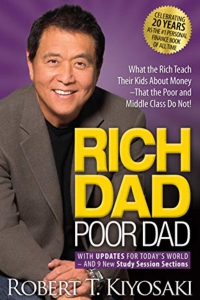
I think that is such wisdom. A mutual friend of ours, Chuck Bender, shared with me one day. He said, “Don, all progress starts with a yes.” Now, catastrophe is sometimes avoided with a no, but progress does not result from a no. Progress only results from a yes. A client of mine, a really smart lady, suggested to me, “I want you to read this book.” I’m a big reader and learner. I’m only through half of them so far, and it’s a heavy month. The book is by Michael Singer, The Surrender Experiment, a New York Times bestselling book.
It is a couple of hundred pages on, “I built a couple hundred million dollar companies, and I’ve had a phenomenal life merely because I said, yes.” It’s a great book. I highly recommend it. I love that share. It took me years and years to set my ego aside enough to where I would not only listen, but actively seek out other people’s input. Many times I thought I was the smartest guy in the room. Sometimes, I actually was the smartest guy there but probably more than I thought I was. If you did not agree with me, I was pretty sure you were at best confused and at worst impaired because I was right and you were wrong. It took me many years to get to where I actively covet other people’s input and feedback.
Don, you’re also a member of the Entrepreneurs’ Organization. One of the gifts of being part of this group is I went to this international conference in Dubai. It’s 120 people there, and as I talked to people, I was the only person without a coach. I’m like, “What are people on about having a coach?” I had a fitness and voice coach. I had a couple over the last few years, but sometimes it’s okay to hire yourself a bully and someone that’s going to say, “Dude, why this?” Because as an entrepreneur, nobody is holding you accountable but yourself. You’ve got your clients, and maybe your staff will spike up occasionally, but you hire yourself a bully and they give it to you straight, and the magic happens.
I’m stealing that Pieter. I’m using that and maybe HireABully.com. I was probably 45 when I hired my first coach. I did it lackadaisically that a lady that I was sitting with at the table said, “Don, let’s join and do it together.” I thought, “I’ll join just to see that you don’t get hurt,” because she was pre-startup, pre-revenue, and it was fairly expensive. I joined but I learned a bunch. I’m a big believer in hiring that bully. Get one that’s expensive and who can teach you the good stuff.
I met another coach. I was like, “I want one day with you. I don’t want to do your program. I don’t want to do any of that. I’ll fly out to see you, and I want six hours in a room with you. After three hours, we’ll go to lunch and then three hours more.” He was open to that, and I think those six hours cost me $25,000, which is pretty rich. Let me tell you, it was worth every penny.
Sometimes, it pays to be economical and to buy the large case of chips because they’re cheaper but when it comes to improving you, maybe you should look for the premium experience. Somebody who can let you trade your dollars for time. That’s what happened to me. I traded a few dollars for a couple of years’ worth of blood, sweat and tears.
Robert Kiyosaki, the guy who wrote Rich Dad Poor Dad, was all about hiring experts. I don’t try to fix toilets. I will, but it’s going to take me a lot longer to do to go to YouTube, get the right part, get the guy to do it, or sort through my texts. I have other skillsets, and the same with getting a coach. I had a few coaches and they were either a softy, this, that and the other. Eventually, I hired a bully. He’s not even a professional coach, but I knew this guy. I said, “Just get me through this pandemic. I need to get off my ass and get going on rebuilding product.”
He did that for me because it’s asking the rough questions. I wanted to add to your $25,000, six hours question. That’s cool, and I think there’s also a way around that in terms of there’s nothing wrong with asking. When I had this big struggle with my team, two years into the new iteration, we were doing well but there were lots of misalignment. I know people hated me and I just went, “Who’s the best guy in South Africa in tourism? Who’s got the biggest team, the longest track record, and nobody leaves?” They said it was Terry.
I called Terry. I knew him from my previous iteration of my dad’s business. I said, “Will you be my mentor?” He said, “No way. I’m too busy to be your mentor.” I said, “Terry, can we do breakfast?” He said, “Sure.” I took him to breakfast. We spent two hours. I made three pages of notes and I completely flipped my business. Six months later, my team was, “Whew,” because I went to the top guy and asked him some key questions, and I went prepared.
It's always better when someone introduces you to a community. Click To TweetThere’s another nugget there, which is to ask. In my case, I couldn’t get what I got by asking. I could only get what I got by paying. The other side of it, and I am a big believer in asking, is that when people pay, they pay attention. Sometimes when they don’t pay, they don’t pay attention. They’re back three months later asking the same questions, but I am a big believer in just ask. A good example is I think Mark Cuban, the Dallas Mavericks Owner, Shark Tank, Dallas-based billionaire, his rate card speaking fee is $300,000. If Nike, Coke or Ford Motor Company hires him to come in and talk, he charges $300,000, and he probably donates it, as far as that goes. In the Entrepreneurs’ Organization, a guy who had no fear, I reached out to him, and we had him for a private hour on a Zoom call with about 2,500 people around the world.
That was the Santa guy that reached out that was on a show, isn’t it?
I hit one of his best friends. Santa, who will be on the show, was the Chapter President, and the fellow who reached out was the learning chair. He reached out to Mark Cuban and said, “Would you come to speak to a bunch of entrepreneurs?” Obviously, Mark is an entrepreneur and loves entrepreneurship, and he did.
It was a great talk. I saw it. It was an online talk. We all watched it worldwide. It reached thousands of people.
I’ll say this. It was far less than the $300,000 speaking fee. Sometimes you can just get it if you ask. Here’s maybe the toughest question, Pieter. The Proven Entrepreneur Tribe and Clan, if we could support you in any manner, what would you ask of us? It has to be for you. It’s always the toughest question.
I didn’t come here for an ask. The biggest thing that I could ask from the community is an introduction. I’ve already asked that of you even before this call. When I see somebody that I need to meet, it’s always better when someone introduces you. I asked the question because I’ve got this business doing these mindful walks, and I plan to do my first Camino de Santiago, which is this pilgrimage across Spain. I’m planning to do that, if not in 2022, then early in 2023.
I’m taking a bunch of people along with me because this is a proven process for shifting something in your head. I would love to get in contact with Emilio Estevez because he made a movie about the Camino, and I think we would like each other. We could find a way to work together on this. That’s what I would ask is for somebody to introduce me to Emilio Estevez so we can do lunch.
Somebody out there who knows Emilio Estevez, we want to connect him with Pieter. Pieter, if we were going to connect with you, how would we do that? What’s the best email or phone, or what’s the best way to reach out to you?
If you just type in Shoshin, it means a beginner’s mindset in Japanese. If you type in Shoshin Walks on the internet, you’ll find me. I’ve got a YouTube channel. There’s a website and my email address is PG@ShoshinWalks.com.
I’m glad you gave the definition of Shoshin because I forgot to ask. Pieter, thank you so much for being on the show. Folks, that’s another episode of the show. We’ll see you next time. Thank you. Bye now.
Thank you so much, Don.
Important Links
- Shoshin Walks
- The Surrender Experiment
- Rich Dad Poor Dad
- YouTube – Shoshin Walks
- PG@ShoshinWalks.com
About Pieter Geldenhuys
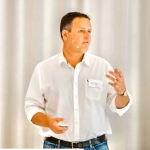 I hold space for individuals, teams and leaders to take their next step. Personal coaching and team engagement utilizing Enneagram, Scaling Up and 7 Habits tools. My business interests include Shoshin Walks, Luxury Safaris Southern Africa and Tourism Boot Camp.
I hold space for individuals, teams and leaders to take their next step. Personal coaching and team engagement utilizing Enneagram, Scaling Up and 7 Habits tools. My business interests include Shoshin Walks, Luxury Safaris Southern Africa and Tourism Boot Camp.
For information on how to work with Don visit Work With Don Williams
You can also reach out to Don Williams at https://donwilliamsglobal.com
Please join Don and his businesses in support of St. Jude’s Children Research Hospital in its Mission to cure Childhood Cancers. You can donate to St. Jude at stjude.org/donate
